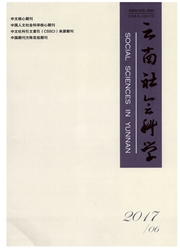

 中文摘要:
中文摘要:
尽管清水江文书已有50万件的估计,但已探明的明代文书只有13件,且地域只是下游地区的三穗、天柱、锦屏3县。然而13件文书遗存却是该地区弥足珍贵的文物,又给我们研究这一地区明王朝时期苗侗民族经济社会史提供了第一手历史文献资料。更重要的是,在对文书契式的书写格式研究可以确认几点认识,第一,明代清水江流域有成熟的契约文书;第二,明代清水江流域契纸是徽州契约的移用;第三,明代契纸是清代契约的模版;最后,作为“边疆”的少数民族地区不断地纳入国家行政区域是文书流行的成因。
 英文摘要:
英文摘要:
Qingshuijiang Documents can make up for the lack of knowledge about Qingshuijiang history testi- fied by literatures in the Ming Dynasty. The place names in these documents are important information database for the historical geography in the minority areas in the Ming Dynasty, which can be applied to analyze and un- derstand the geographical evolution of Qingshuijiang Basin, its politics and ethnic - group geography. In Addi- tion, these documents also provide much detailed information about the social and economic life by the Miao and the Dong ethnic groups, and show the complex ways of life, such as the people for the national minority heredi- tary headmen, the empire armies in military camps, and the co - existence of the people in the national house- holds and the minority inhabitants. The mediation of the affairs involved in the documents is quite complex. The documents illustrate a special dual society in the minority areas in Qingshuijiang Basin.
 同期刊论文项目
同期刊论文项目
 同项目期刊论文
同项目期刊论文
 期刊信息
期刊信息
